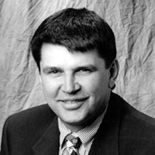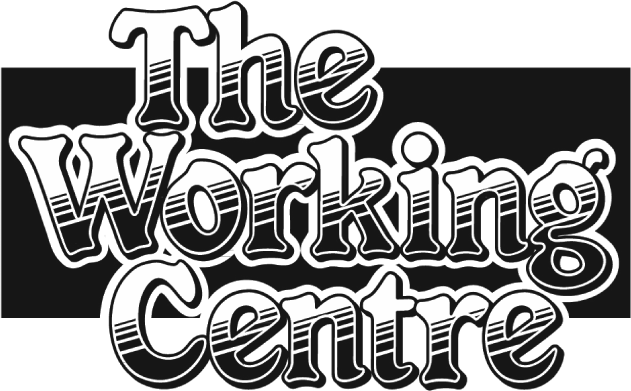
The Guest of Honour at this year’s Mayor’s Dinner will not be with us, although he was an enthusiastic supporter and attended every Mayor’s Dinner for the past 12 years. Peter Hallman died tragically at age 48 in a motorcycle accident in north eastern Ontario on June 22, 1999.
In 1999 alone, Hallman was chair man of the K-W Community Foundation and the Centre for Family Business; he served as director, coach and organizer for the Breslau Recreation Association; he was an auditor, building committee member and youth worker at Breslau Mennonite Church. Peter Hallman was married to Brenda Snyder for 25 years and together raised five children, Mark, Greg, Brent, Nadine and Yves.
Peter Hallman was president of Hallman Eldercare, which operates three retirement homes in Waterloo Region and was also the operating officer of the Hallman Group of Companies, involved in apartment construction and land development.
The Mayor’s Dinner Committee’s choice of Peter Hallman as guest of honour was made with the recognition that, despite Peter’s short life, he grew into the role of a community leader based on integrity and a commitment to strengthen community organizations. The story of how Peter grew into a position of immense respect can be told on several levels.
The Mennonite Roots of the Hallman Family
Peter’s story is that of a well- grounded Mennonite family that has transferred an honest community ethic down through several generations. It is the story of a young man who constantly took the initiative to become fully involved in community It is also about a young man who attempted to influence and enjoy the spirit of youth through sports activities.
The history of the Hallman family directly links to the founding pioneer spirit that Mennonite families brought to Waterloo County in the early 1800s. The Hallman story can be traced back even further to Anthony Hallman born in 1671 who became the owner of one hundred and fifty acres of land in 1720 in Montgomery County in Pennsylvania. During the 1820s the farmers in Montgomery County were facing financial depression. 19-year-old Jacob Hallman walked to Canada and made his home in Waterloo County. He persuaded his father and mother, Benjamin and Elizabeth, to journey along the trail to Queenston, to Dundas, and on to a farm two miles west of Waterloo.
Joseph Hallman, the fourth son of Benjamin and Elizabeth, purchased a farm located about a mile south-west of New Dundee in 1837, which became known as the Old Hallman Homestead. This was the year of the Rebellion in Upper Canada. It was a pioneer country and the farmers who worked the land were the backbone of a small and fragile economy. The Hallman family was a farming family and its members participated in the daily Mennonite culture that included - using the land to produce food for the family, selling produce at the market, attending church services, Sunday School and visiting each other on Sundays.
The transition from farming to urban living meant that homesteading values were transferred to a very small plot of city land with all the uncertainty of how to create and earn a living. Anson, the great grandson of Joseph, took a correspondence course in architecture and set about creating work by designing buildings, and making door- frames, windows and cupboards. He was described as “conscientious and industrious, with traditional pride in being a provider.” The family business became building and construction. By the 1950s Anson’s son Lyle Hallman had created his own building company known in Kitchener-Waterloo for building affordable, post-war single family housing. Lyle Hallman’s company grew into the largest owner of apartment buildings and is a major land developer in Waterloo Region.
Community Leadership
As a child of the l950s, Peter followed in this tradition. Unlike his ancestors, his concerns were less about the precarious nature of day-to-day living, and more about how to engage in meaningful work.
Peter’s interest in community organizations was partially sparked by Mennonite Central Committee’s Year of Service program, in which young Mennonites spend a year living on a minimal stipend while doing community work. For Peter this was at a Group Home for troubled kids in Spring Valley outside of New York. Margaret Motz was the Executive Director of the Canadian Mental Health Association in the late 19 when a young Peter Hallman was chair of the Board of Directors. It was very unusual for a young man to be the president of an organization and at the same rime to be so thorough in his understanding of what the organization was trying to accomplish. While working towards becoming a Chartered Accountant he had already understood that it was important to be firmly involved in organizations that served the community.
K-W Hospital Board
Community leadership was a role Peter developed and handled with ease. On the K-W Hospital Board, as a civic representative from Woolwich he was voted chair of the Board, at the time of discussions with Freeport Hospital on ways of co-operating together. The major issues were how two distinct cultures — one dealing primarily in acute care and the other a chronic care facility could merge and still retain the distinctiveness of the two organisations.
How would the workers be treated with management being shifted about to create economic savings? What kind of long-term resentment would develop if the merger did not recognize what the smaller hospital could bring to the new dynamic?
Peter was appointed chair of the transition committee that was struck on November 18, 1994. It was a 23-person committee representing Board members and senior staff from both organizations. This was the type of position where Peter’s skills were best used. The circumstances called for a great deal of diplomacy and tact. It meant that varying points of view needed to be expressed fully and debated. All those involved had to have the opportunity to vent anxiety about the proposals and also to creatively devise new approaches. As Chair of the Steering Committee Peter worked hard to build consensus, ensuring ideas were debated and that the work of the committee was transparent to those involved, Al Collins, the CEO of K-W Hospital during that period saw how Peter “conceptualized the idea, worked with people to rally around it and then encouraged the committee to do the work to bring it to fruition.” The skill of leadership and consensus building was a natural part of the way Peter worked within a committee.
K-W and Area United Way
John Thompson recalls that Peter Hallman became involved with Federated Appeal as an outgrowth of other volunteer activities. Member agencies of Federated Appeal were obliged to provide one volunteer for every thou sand dollars of grant they received. Volunteers mostly worked at door to door fundraising. In time Peter became a Board member and was President of Federated Appeal at a ceremonial flag exchange held at Kitchener’s North Waterloo District Boy Scout headquarters on October 18, 1984.
Kitchener-Waterloo became the 106th member community in United Way/Centraide Canada. Peter and Federated Appeal past presidents and Board members David Graham, David MacIntosh David Uffelmann and Bryan Stewart were strong supporters of this national fundraising body. They had convinced the Board that United Way/Centraide Canada gave the organization access to skills development programs, campaign management strategies and general management techniques.
Over the last 15 years this support has resulted in the K-W and Area United Way growing into an efficient, well-run, successful fundraising vehicle for agencies serving Kitchener-Waterloo.
Working With Youth
Baseball was a big part of Peter’s life. He was a sponsor of the Waterloo Hallman Twins Senior Men’s Fastball team. He was involved as a coach in the Rural league. He loved coaching youth and helping to encourage them to play fair, and ensure that all would get an equal chance to play, while trying to get the most out of each player’s potential. He was a knowledgeable coach who could push his players and still be respected when they would realize what they had accomplished together. While Peter’s community and business connections were very extensive, some people consider that it was really his passion for baseball and other sports that inspired Peter.
Peter was an optimistic spirit who loved to have fun and have celebrations with family and friends. He was competitive and entrepreneurial in that he was always seeking to improve in his business and sports endeavours. He was always determined to do things well and to put out a full effort when he became involved with any project. When plans did not turn out, he was known to call that 'a growth opportunity, which should not make one bitter, but from which one can grow.' Peter’s goodwill and community contribution will be truly missed in Waterloo Region. Join us on April 8th as we celebrate the kind of initiative and community spirit shown by Peter Hallman.

